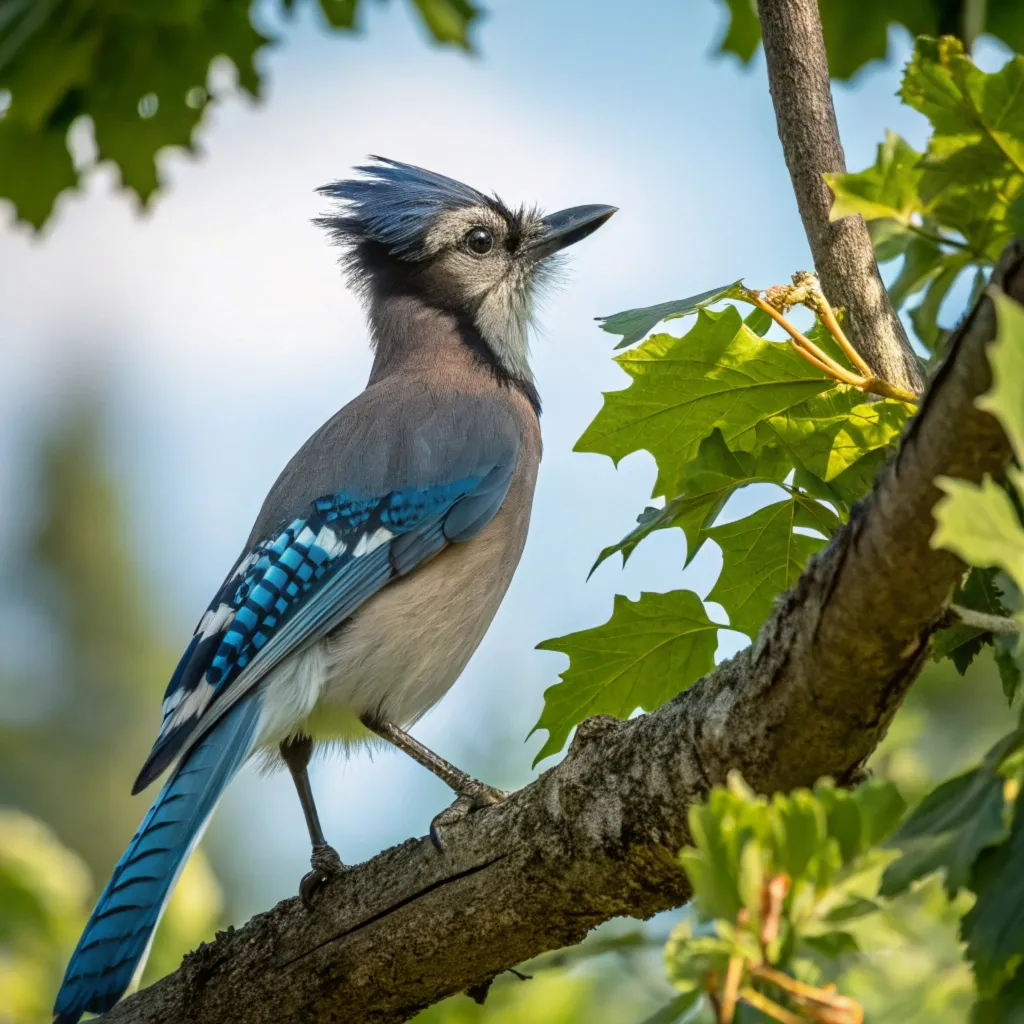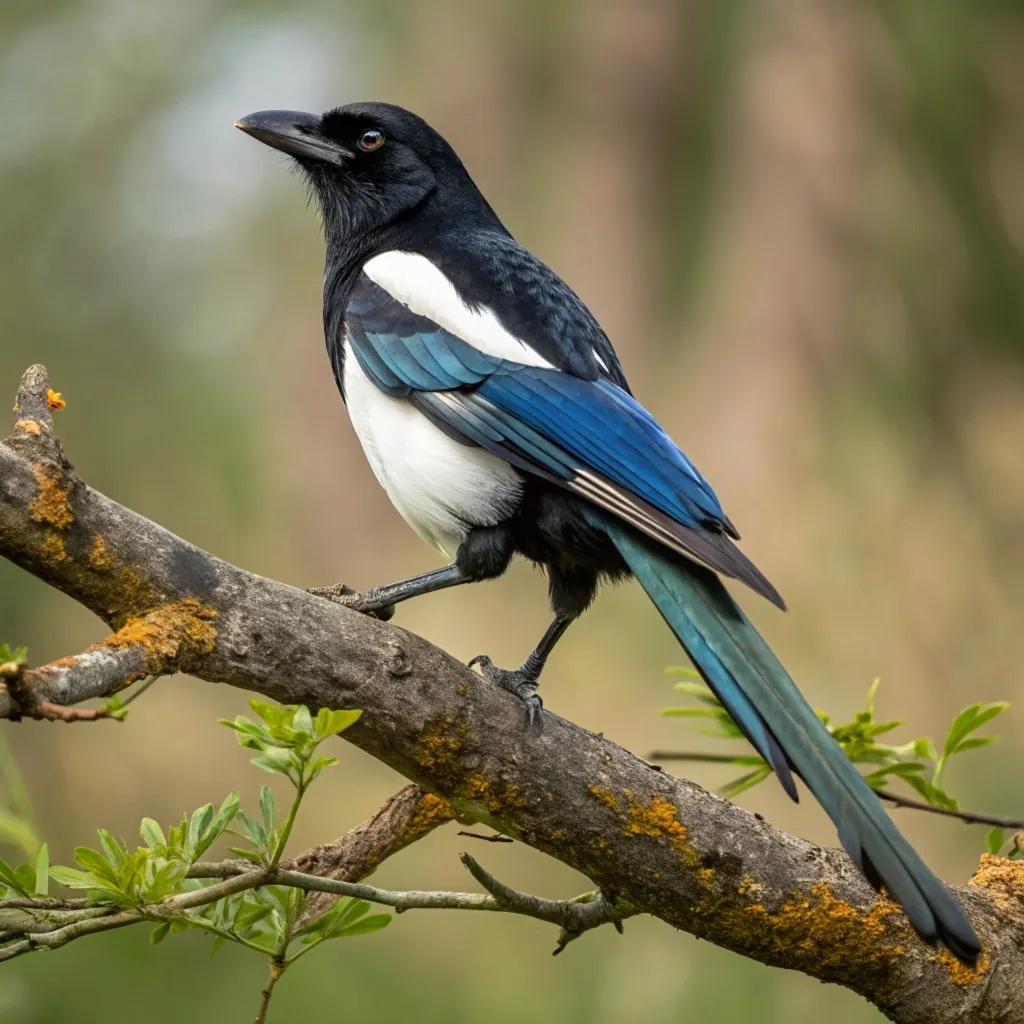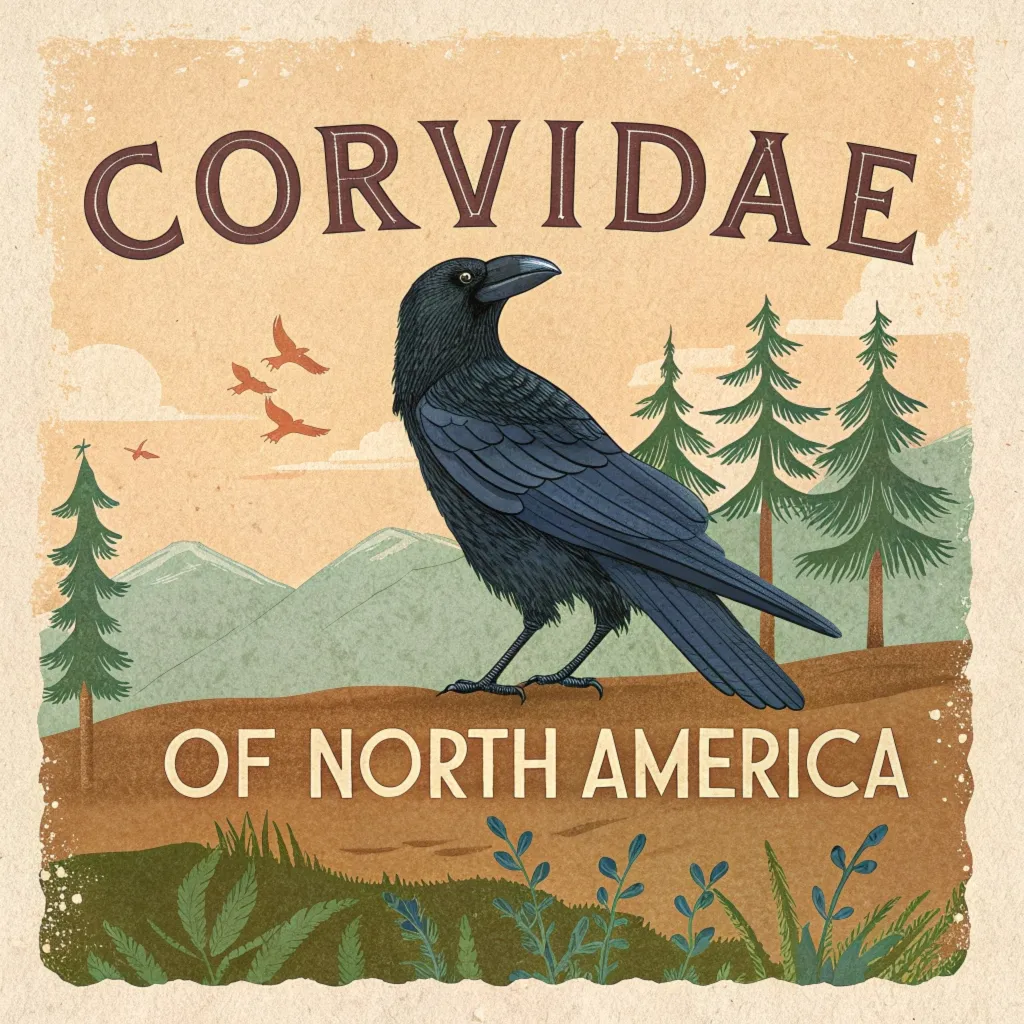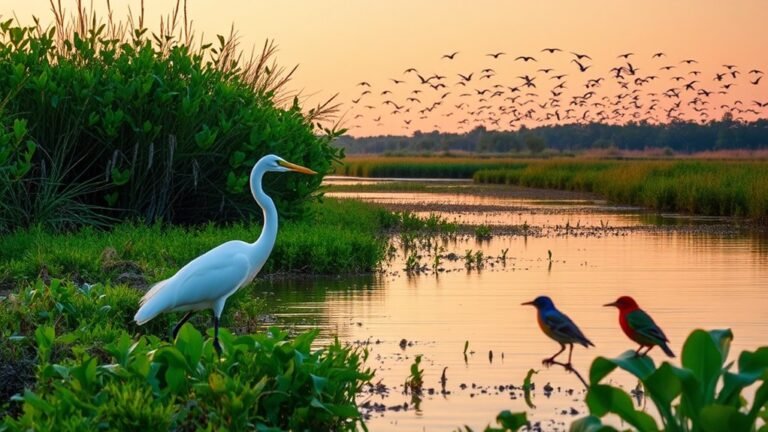The Intelligent Corvidae of North America: Ultimate Guide
Have you ever seen a clever bird that seems to be watching you? It might have been a corvid! Corvids are a special family of birds that includes crows, ravens, jays, and magpies. These birds are super smart and can do amazing things.
In North America, we have many different kinds of corvids. They live in all sorts of places, from cold forests to hot deserts, and even in cities!
This guide will help you learn about these fascinating birds. We’ll explore what makes them special, how they live, and why they’re so important to nature.
Get ready to discover the wonderful world of North American corvids!
Key Takeaways
- Corvidae family in North America includes 18 native species of crows, ravens, jays, and magpies
- These birds are known for their high intelligence, with the ability to use tools, solve complex problems, and display social behaviors
- North American corvids have adapted to a wide range of habitats, from forests to urban areas
- Many corvid species play important ecological roles as seed dispersers and scavengers
- Some corvids, like the American Crow, have thrived in human-altered environments
- Conservation efforts are crucial for certain corvid species facing habitat loss and other threats
- Corvids exhibit diverse physical characteristics, ranging from the large Common Raven to the smaller jays
- These birds often have complex social structures, including cooperative breeding in some species
- Vocalizations are an important aspect of corvid behavior, with many species having extensive vocal repertoires
- Human-corvid interactions have shaped cultural perceptions and scientific understanding of these birds
Corvidae Family Overview

The Corvidae family holds a unique place in the avian world. These birds have been the subject of numerous myths, folktales, and scientific studies. Their intelligence and adaptability have allowed them to thrive in various environments across North America.
The Corvidae family is a group of birds that includes crows, ravens, jays, and magpies. These birds are known for being very smart. They can use tools and solve puzzles.
Corvids live in many different places in North America. You can find them in forests, cities, and even deserts. People have told stories about these birds for a long time because they are so interesting.
Crows: The Clever Opportunists

American Crow: Highly Intelligent Corvidae
The American Crow (Corvus brachyrhynchos) is a common sight across much of North America. These birds are large passerines, measuring 40-50 cm from beak to tail. Their plumage is entirely black with iridescent feathers. American Crows are known for their adaptability to human environments and their complex social behaviors.
Northwestern Crow: Coastal Specialist
The Northwestern Crow, once considered a separate species, is now classified as a subspecies of the American Crow. These birds are found along the Pacific Northwest coast and have adapted to coastal habitats.
Crows are smart birds that you can see in many places. They are black and shiny. American Crows live all over North America. They can live in cities and farms.
Northwestern Crows live near the ocean in the northwest part of North America. These crows like to eat things they find on the beach. Both types of crows are good at finding food and solving problems.
Ravens: The Largest Corvids

Common Raven: Most Widespread Corvidae
The Common Raven (Corvus corax) is the largest member of the Corvidae family in North America. These birds are 21-27 inches in length with glossy black feathers, a large thick bill, and a wedge-shaped tail. Ravens have adapted to a variety of climates, from subarctic Canada to the hot deserts of the Southwestern United States.
Chihuahuan Raven: Desert Dweller
The Chihuahuan Raven (Corvus cryptoleucus) is found in the open, hot, dry areas of the western United States. These birds have adapted to habitats that are less appealing to American Crows and Common Ravens.
Ravens are big black birds that look like crows but are bigger. The Common Raven lives in many places in North America. They can live in very cold places and very hot places.
The Chihuahuan Raven lives in dry, hot areas where other crows and ravens don’t like to live. Both types of ravens are smart and can find food in tough places.
Jays: Colorful and Diverse

Blue Jay: Bold and Beautiful
The Blue Jay (Cyanocitta cristata) is known for its striking blue plumage and bold personality. These birds are highly intelligent and have a diverse diet, including invertebrates, seeds, and even small vertebrates.
Canada Jay: The Brave Northern Bird
Also known as the “Camp Robber,” the Canada Jay (Perisoreus canadensis) is a courageous bird of northern forests. These birds are known for their fearless behavior around humans and their ability to survive harsh winter conditions.
Steller’s Jay: Western Forest Dweller
The Steller’s Jay (Cyanocitta stelleri) is a distinctive corvid found in the western forests of North America. These birds have a dark blue body and a black crest, making them easily recognizable.
Jays are pretty birds that come in different colors. Blue Jays are bright blue and white. They are loud and like to eat many things. Canada Jays live in cold forests and are not afraid of people.
They even take food from campers sometimes. Steller’s Jays live in western forests and have blue bodies with black heads. All these jays are smart and good at finding food.
Magpies: Striking Black and White

Black-billed Magpie: Iconic Western Bird
The Black-billed Magpie (Pica hudsonia) is a common sight in the Central and Western United States and Canada. These birds are known for their striking black and white plumage and long tails.
Yellow-billed Magpie: California Endemic
The Yellow-billed Magpie (Pica nuttalli) is found only in central California. These birds closely resemble the Black-billed Magpie but can be distinguished by their bright yellow beak.
Magpies are birds that look like they are wearing tuxedos. They have black and white feathers and long tails. Black-billed Magpies live in many places in the western part of North America.
Yellow-billed Magpies only live in California. They look like Black-billed Magpies but have yellow beaks. Both types of magpies are smart and like to collect shiny things.
Nutcrackers: Seed Specialists

Clark’s Nutcracker: Mountain Forager
The Clark’s Nutcracker (Nucifraga columbiana) is found in the coniferous forests of western mountain ranges. These birds are known for their remarkable ability to remember the locations of thousands of stored seeds.
Clark’s Nutcrackers are special birds that live in mountain forests. They are very good at finding and storing seeds. These birds can remember where they hide thousands of seeds, even after a long time.
They use these seeds for food when other food is hard to find. Clark’s Nutcrackers help trees grow by planting seeds they forget about.
Corvid Intelligence and Behavior
Corvids are renowned for their cognitive abilities. They have demonstrated the capacity to use tools, solve complex problems, and display self-awareness.
Many species, such as the American Crow and Common Raven, have extensive vocabularies and can mimic various sounds.
Corvids are very smart birds. They can use tools to get food, like using sticks to catch insects. These birds can solve hard puzzles and even recognize themselves in mirrors.
Some corvids, like crows and ravens, can make many different sounds. They can copy the sounds of other animals and even human words. This helps them communicate with each other and adapt to different situations.
Ecological Roles of Corvids
Corvids play important roles in their ecosystems. Many species are efficient seed dispersers, contributing to forest regeneration. Some, like jays, are known to cache food, which can lead to the growth of new plants when caches are forgotten.
Corvids help nature in many ways. When they eat fruits and nuts, they spread seeds to new places. This helps new trees and plants grow.
Some corvids, like jays, hide food for later. Sometimes they forget where they hid the food. The forgotten seeds can grow into new plants. This is how corvids help forests grow and stay healthy.
Conservation and Human Interactions
While some corvid species have thrived in human-altered environments, others face challenges due to habitat loss and other factors. Conservation efforts are crucial for maintaining healthy corvid populations and preserving their ecological roles.
Some corvids do well living near people. They can find food in cities and towns. But other corvids are having problems. They are losing the places where they live because of changes people make.
To help these birds, we need to protect their homes. This means keeping forests and other natural areas safe. It’s important to do this so all types of corvids can continue to live and help nature.
Corvid Watching Tips
For bird enthusiasts, observing corvids can be a rewarding experience. Look for these birds in a variety of habitats, from urban parks to remote forests. Pay attention to their vocalizations and social interactions to gain insight into their complex behaviors.
Watching corvids can be fun. You can see them in many places, like parks in cities or big forests. When you watch corvids, listen to the sounds they make. They have many different calls.
Also, watch how they act with other birds. Corvids often play or work together to find food. If you’re patient, you might see them doing smart things like using tools or solving problems.
Frequently Asked Questions
What makes corvids different from other birds?
Corvids are distinguished by their high intelligence, complex social behaviors, and adaptability to various environments. They have larger brain-to-body size ratios compared to most other birds.
Are all corvids black?
No, while many corvids like crows and ravens are predominantly black, others such as jays and magpies have colorful plumage with blues, whites, and even yellows.
How long do corvids typically live?
Corvid lifespan varies by species, but many can live 10-15 years in the wild, with some individuals reaching 20 years or more in captivity.
Do corvids migrate?
Some corvid species migrate, while others are year-round residents. Migration patterns can vary depending on the specific species and local conditions.
Can corvids recognize human faces?
Yes, studies have shown that some corvids, particularly crows, can recognize and remember individual human faces for extended periods.

Kashvi is a passionate bird enthusiast and nature lover who has been fascinated by the world of birds for years. With a keen eye for detail and a love for learning, Kashvi is dedicated to sharing her knowledge and insights with fellow bird enthusiasts on Avian Enthusiasts. Through her engaging and informative articles, Kashvi aims to inspire others to join her in exploring the fascinating world of birds and to promote a deeper appreciation for these incredible creatures.







